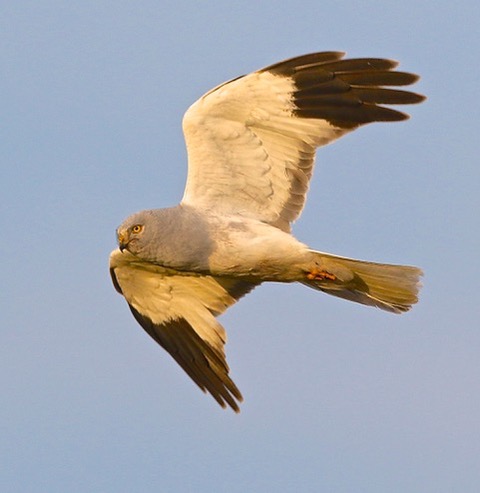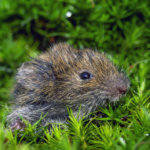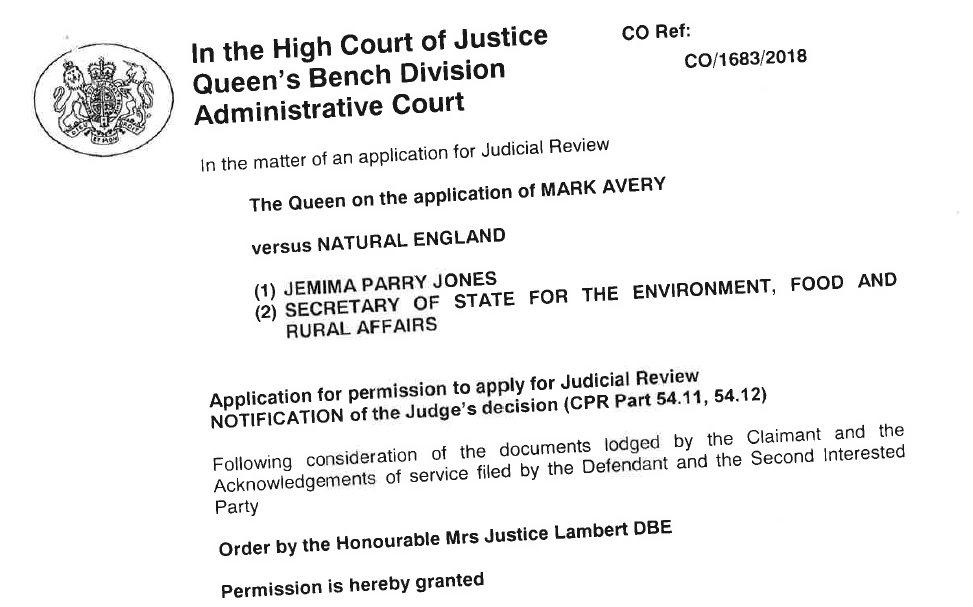
Hen Harriers in England have had a good breeding season this year – there were 14 nesting attempts, of which 9 produced a total of 34 fledged young.
These 9 nests were, I think:
3 nests on United Utilities land (where grouse shooting occurs) in the Forest of Bowland, Lancashire, which were guarded by RSPB staff and produced 13 young
3 nests on Forestry Commission land in Northumberland (also designated as National Nature Reserve) which were guarded by RSPB staff and a host of other people and produced 11 young
1 nest in Cumbria on a National Nature Reserve which was guarded by RSPB staff and produced 2 young
1 more nest in Cumbria in an arable field (albeit close to a grouse moor apparently) in the Yorkshire Dales National Park which produced 4 young.
1 nest on National Trust land in the Peak District where the former shooting tenant had recently left because of a difference of opinion on management aims with the NT but which is managed for grouse shooting and which produced 4 young.
And then there were five other nests which failed. Two of these were on a famous grouse moor outside any National Park where NE has a close relationship with the land managers but where local raptor workers were concerned by the amount of interest in the nesting area shown by some local men on ATVs.
I don’t know, not for sure anyway, where the other three nests were.
 Natural England, the GWCT and the Moorland Association all claim to be delighted about this and are claiming the credit for themselves, National Nature Reserves, Defra, grouse moor owners, the Hen Harrier Plan, the non-existent brood-meddling scheme. If you want to be utterly confused about what is going on then read the garbled Defra/NE press release, and if you want a real chuckle then read the Moorland Association (quoting GWCT too).
Natural England, the GWCT and the Moorland Association all claim to be delighted about this and are claiming the credit for themselves, National Nature Reserves, Defra, grouse moor owners, the Hen Harrier Plan, the non-existent brood-meddling scheme. If you want to be utterly confused about what is going on then read the garbled Defra/NE press release, and if you want a real chuckle then read the Moorland Association (quoting GWCT too).
But if you want a much clearer description of what happened and what’s happening then read the RSPB Skydancer blog and the RaptorPersecutionUK blog on the subject.
So the main people we have to thank for this good year for Hen Harriers are United Utilities and RSPB in Bowland (it’s a shame that there weren’t any Hen Harriers nesting on the Duke of Westminster’s land at Abbeystead or the Bleasdale Estate as well as on the UU land isn’t it?), the Forestry Commission, the RSPB the Northumberland National Park and Northumberland Wildlife Trust in Northumberland and the National Trust and their new shooting tenants in the Derbyshire Peak District. I’m sure there are others we should thank too but I’m not sure who they are so I can’t. It is a utility company, a non-ministerial government department and a few wildlife charities which seem to have been involved with most of the successful nests. Huge expanses of intensively managed driven grouse moors remain raptor-free zones.

As a result of all this collaborative work 34 Hen Harriers have fledged and a good number of them are now carrying satellite tags. They are entering the dangerous part of the year – most Hen Harrier satellite tags cease to transmit, which probably means in these cases that their bearers cease to breathe – in the first six months of life. Few reach their first birthday; very few produce young themselves. Prepare yourself for a stream of ‘disappeared’ Hen Harriers over the next few months.
And the fate of those Hen Harriers is very important to the English Hen Harrier population. Bumper years like this one help bolster the breeding population for years to come.
It’s obviously nonsense to claim, as the Moorland Association does, that the licence (not activated) for brood meddling is why Hen Harriers have had a good year. But let’s see what the survival of thsoe birds is as they fly over the grouse moors of northern England in the grouse-shooting season. Most of them should still be alive at Christmas, bleeping away, unless some dark fate befalls them on a remote grouse moor – let’s hope so, but let’s see.
PS Amanda Anderson and Andrew Gilruth each have a go at our legal challenge against brood-meddling as follows:
Moorland Association, ‘Yet, certain organisations and individuals are intent on doing whatever it takes, including wasting court time and taxpayers’ money, to prevent a successful outcome’.
GWCT, ‘Activists objecting to these government plans should focus on what is best for the harrier‘.
What a nerve! And how rude to criticise the Hon Mrs Justice Lambert who, after reading the legal submissions from NE and from our lawyers, has given we activists (that’s me and 961 others at the last count who have funded our challenge) and the RSPB, leave to appeal against NE’s wrong-headed decision to licence brood-meddling.

Interviews with Amanda Anderson (MA) and Cathleen Thomas (RSPB) were on Farming Today this morning (2nd August, 5.45 am) and can be heard here:
https://www.bbc.co.uk/programmes/b0bcddz3 .
AA is suddenly very much in favour of hen harriers it seems….probably as long as there are just 34 chicks per year which can easily be made to ‘disappear’ during the winter….
Nick
Ps And an interesting piece about farming in the Yorkshire Dales and a new ‘Payment by Results’ scheme there.
Mark, is there any information on how Hen Harriers have fared in Wales,Scotland, Irelland and the I o M?
A really good article Mark.
We now know that it is possible for the hen harrier to essentially be re introduced into England as a breeding bird. We all know that there is a long way to go but you have to start somewhere. 34 chicks is that start.
Since the nadir of the so called Parliamentary Debate on grouse shooting several things have come together to make a difference. Public awareness of the issues has galvanised and grown. The pressure on Govt departments and NGOs has intensified. The use of FoIs has been most notable and now the use of successful crowd funding techniques to hold decision makers to account is becoming important. It is good that GWCT and the Moorland Assoc do not like this development. The Police are beginning to wake up to wildlife crime and are starting to improve their resourcing of this issue, especially in North Yorkshire. Some of the National Parks are taking a positive lead and standing up for the people who use rather than abuse these wonderful areas.
In my own neck of the woods there are new hen harriers flying around the Yorkshire Dales for the first time in over a decade and I could not be more delighted. I would like to thank all of the wardens, volunteers and experts whose hard work and dedication has helped this to happen. I wish all of the 34 chicks a charmed life as I expect some of them will need it.
This is a good news story but lets not get carried away as the population is still in national capacity terms tiny and despite the grouse botherers having currently the safety net of brood meddling, which means there should be NO persecution or this part of the harrier plan should be deemed a total failure I’m sure birds will die in suspicious circumstances in all the usual diehard criminal places on our grouse moors.
The hypocrisy of Amanda Anderson is breath taking this is the woman who said ” if we let harriers in( to grouse moors) we will have nothing left -an admission that persecution is/was rife, GWCT and NE are little better, but it is a good start to a new harrier surge.
Of course there were no successful nests on private grouse estates Bowland is almost an RSPB reserve with shooting surrounded by awful neighbours, the pair in the YDNP were not on the moor and those in the peak were on a moor admittedly shot but owned by the National Trust.
The only nests on a private grouse moor failed, polygamous males often abandon one of their mates but rarely all, very, very rarely indeed even if few young are reared.
I am always amazed by the respect and regard still shown towards the GWCT by some conservationists and NGOs. I guess it’s a hangover from the days before the Hunting Act and the CA. Now the main reason for their existence seems to be to provide quotes and soundbites for the blood sports lobby.
I’m also amazed that any self-respecting scientist would work (or continue to work) for an organisation that seems willing to mangle the evidence to suit its own ends with such enthusiasm and regularity.